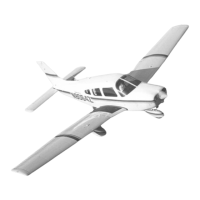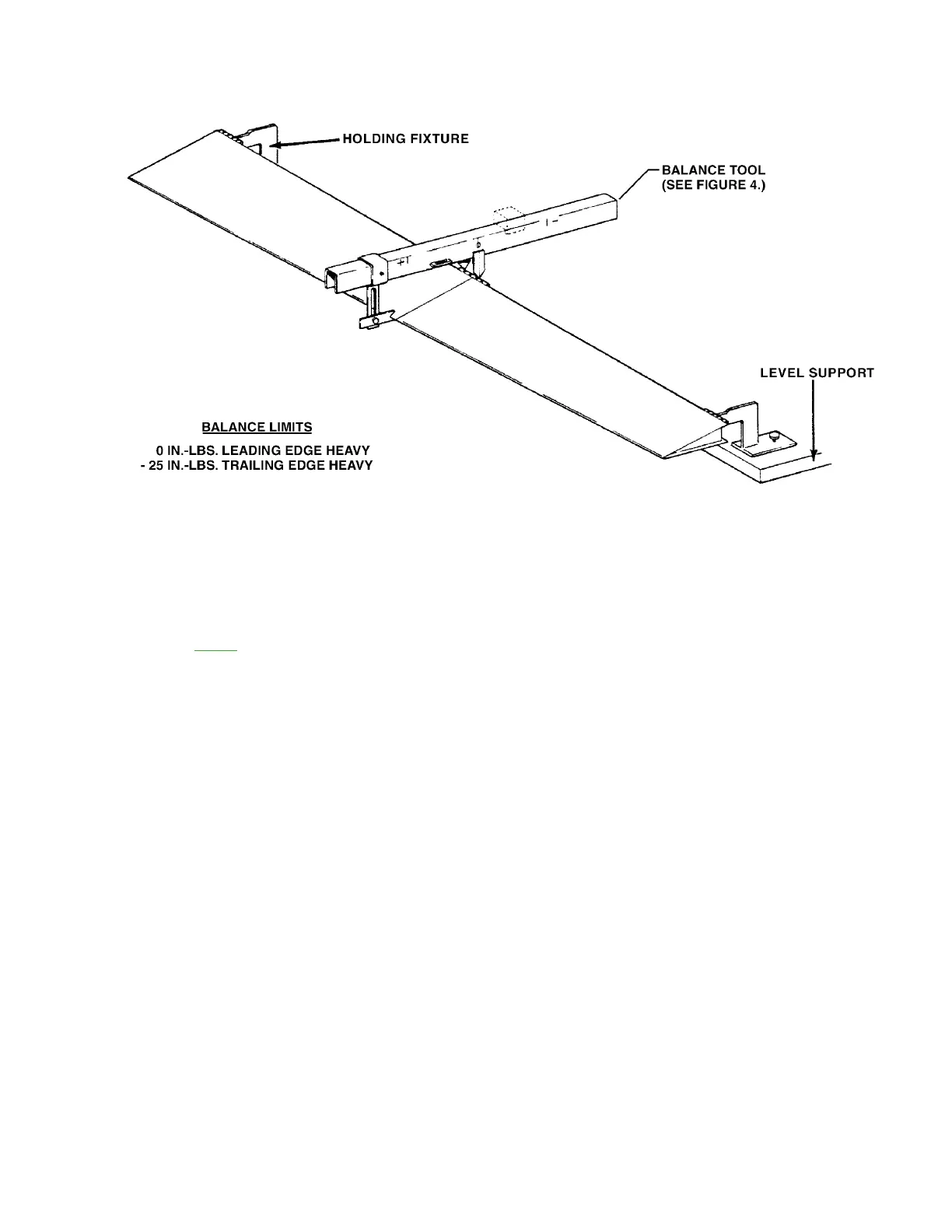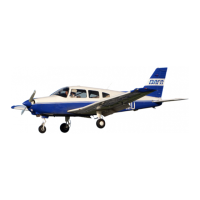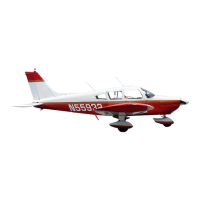PIPER AIRCRAFT, INC.
PA-28-161, WARRIOR III
MAINTENANCE MANUAL
PAGE 3
Nov 30/064H13
57-50-00
C. Balancing (Refer to Figure 2.)
NOTE: Read Control Surface Balancing, below, before proceeding.
The aileron assembly must be complete including static wicks and all attaching screws.
(1) Position the aileron on the balancing fixture in a draft free area and in a manner which allows
unrestricted movement of the aileron.
(2) Place the tool (see Figure 4) on the aileron, avoiding rivets, and keep the beam perpendicular
to the hinge centerline.
(3) Calibrate the tool as described in Control Surface Balancing, below.
(4) Read the scale when the bubble level has been centered by adjustment of the movable weight
and determine the static balance.
(5) If the static balance is not within the limits specified in Figure 2, proceed as follows:
(1) Leading edge heavy: This condition is highly improbable; recheck measurements and
calculations.
(2) Trailing edge heavy: There are no provisions for adding weight to balance weight to
counteract a trailing edge heavy condition. Therefore, it will be necessary to determine the
exact cause of the unbalance. If the aileron is too heavy because of painting over old
paint, it will be necessary to strip all paint from the aileron and repaint. If the aileron is too
heavy resulting from repair to the skin or ribs, it will be necessary to replace all damaged
parts and recheck the balance.
Balancing Aileron
Figure 2

